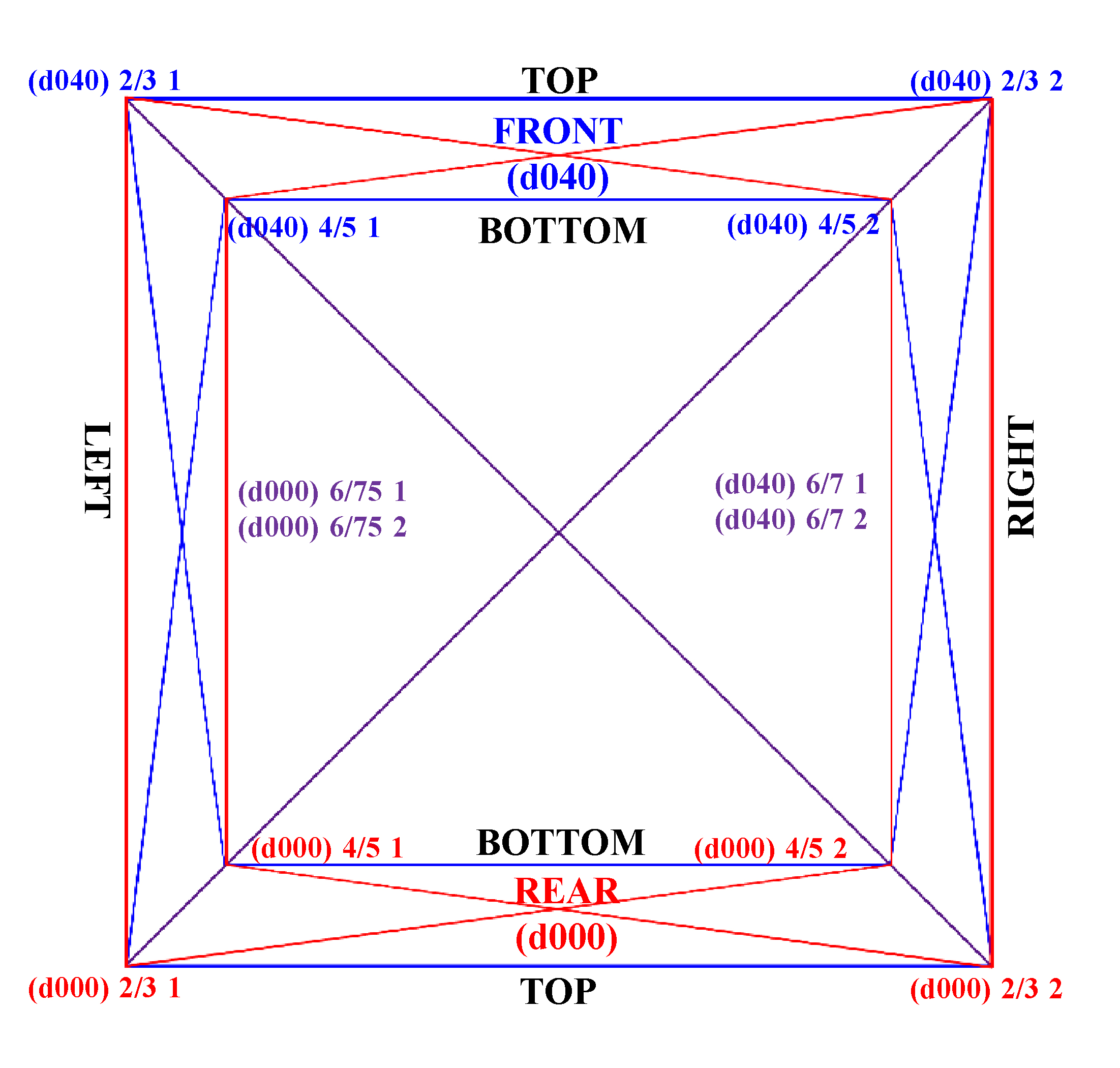
|
Basics |
Audio |
Details |
Configuration |
Credentials |
|
Development |
Music |
Experience |
vs. Speakers |
Appendix |
SYSTEM CONFIGURATION
|
The easiest way to explain those quadraphonic audio planes is that the six walls of the sound cube are configured as six separate quadraphonic audio planes (by connecting the corners of each of the walls) and those six audio planes are grouped into three pairs – front and back, left and right, top and bottom.

As the image above illustrates, between each of those pairs of opposing sides are two diagonally placed planes that are configured to create six more quadraphonic audio planes, pairs of which create an “X” shape and intersect along their shared axis. Six outer “wall” quadraphonic audio planes plus six inner “diagonal” quadraphonic audio planes plus one subwoofer quadraphonic audio plane equals thirteen separate quadraphonic sound sources to work with - how is that for an exponential expansion in dimensional audio? We have all been conditioned for so long to think in stereo – even quadraphonic is defined by front and rear sets of stereo speakers – because we hear in stereo and so that natural match seems like the best fit. But the expansion to three dimensional audio breaks all of those pre-existing limitations and the preconceptions based on those limitations. When I started to think about manipulating the three dimensions in terms of quad (Stereo Quadraphonic) instead of stereo (Quadraphonic Stereo) an entire new world of possibilities revealed themselves!!!
Particularly this little tidbit that you might not have realized, I have hinted at it but not mentioned it specifically as yet - there is not one single stereo quadraphonic system inherent in a sound cube - there are THREE entirely separate stereo quadraphonic systems inherent in a sound cube – specifically each pair of opposite sides!!! And each one of the stereo quadraphonic systems is capable of addressing the entire three dimensional sound space. And the three dual diagonal planes combine to create a three dimensional “starburst” shape with its origin at the center of the sound space, which provides multitudes of pathways through the entire three dimensional space, not just around its perimeter.
Having all of those possible three dimensional pathways inherent and immediately available in a stereo quadraphonic configuration certainly facilitates the placement and movement of sound through three dimensional space, do you not agree? And the key to understanding and visualizing how to access it is to think in quadraphonic terms, not in stereo. Which is also why I required an upgrade to the quad features in Cubase Pro.
So I call this system

because a stereo quadraphonic configuration - such as SQ 3D - actually creates a three-dimensional audio environment as I describe above. Which is why the advertising slogan for SQ 3D is “Put some 3D in your audio!!” |
|
Basics |
Audio |
Details |
Configuration |
Credentials |
|
Development |
Music |
Experience |
vs. Speakers |
Appendix |
All Content is © Copyright 2013-2021
by Chaz Williams
All Rights Reserved
